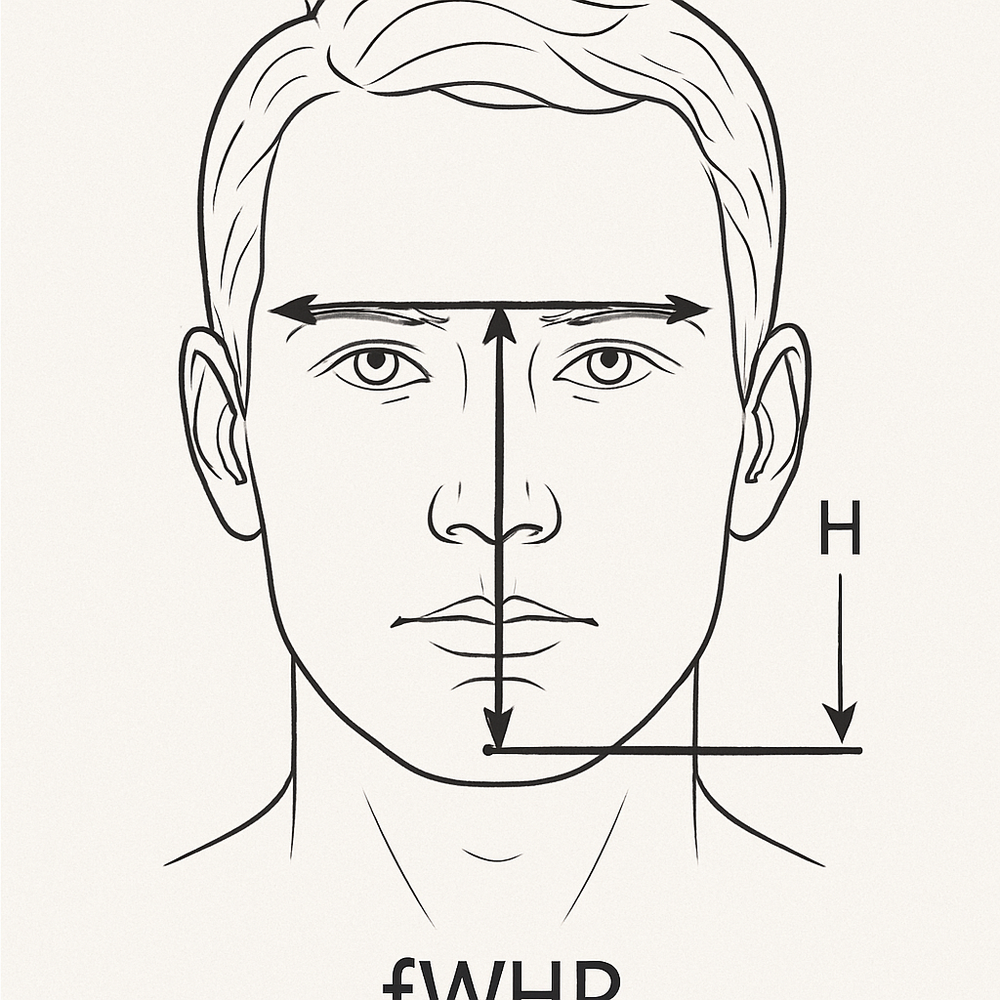Introduction to Mewing
Mewing, a relatively recent phenomenon in the realm of orthodontic health and facial aesthetics, has garnered significant attention online. Rooted in the teachings of Dr. John Mew, a British orthodontist, mewing involves a specific tongue posture aimed at improving one’s facial structure and overall oral health. The technique requires individuals to press their tongue against the roof of their mouth while keeping their lips closed and teeth lightly touching. This practice is believed to stimulate proper jaw alignment, enhance facial symmetry, and potentially reduce issues related to orthodontic abnormalities.
The surge in mewing’s popularity can be largely attributed to its widespread discussion on social media platforms and online forums. Influencers and enthusiasts have shared personal anecdotes and before-and-after images, showcasing remarkable transformations attributed to diligent mewing practice. This, coupled with an increasing public interest in non-invasive methods to enhance physical appearance, has propelled mewing into the limelight.
Beyond its aesthetic appeal, mewing is often associated with tangible orthodontic benefits. Proponents argue that consistent mewing can aid in correcting bite issues, alleviate symptoms of temporomandibular joint disorder (TMJ), and promote better breathing patterns. These purported benefits have led to a growing community of individuals who meticulously practice and document their mewing journey, contributing to the technique’s viral status on the internet.
As we delve deeper into this blog, we will explore the various facets of mewing, examining the statistical trends that highlight its popularity and the scientific discussions surrounding its efficacy. This analysis will provide a comprehensive understanding of why mewing has become a significant topic within both the orthodontic community and the broader public discourse.
“`
Mewing, a term coined to describe a specific technique of tongue posture, traces its origins back to the 1970s. It was developed by Dr. John Mew, a British orthodontist, who challenged conventional orthodontics with his theory of orthotropics. Dr. Mew’s approach focused on the relationship between facial posture and the development of the jaw and teeth. He posited that correct tongue posture, specifically placing the tongue against the roof of the mouth, could influence facial growth and alignment positively.
Initially, Dr. John Mew’s theories were met with skepticism within the medical community. Orthotropics diverged significantly from established orthodontic practices, which typically relied on braces and extractions. The innovative ideas proposed by Dr. Mew faced resistance due to the lack of extensive scientific data supporting them at the time. However, he continued to advocate for his approach, emphasizing the potential long-term benefits of natural facial development.
The promotion of mewing gained momentum with the involvement of Dr. Mike Mew, Dr. John Mew’s son. Dr. Mike Mew, who also pursued a career in orthodontics, became an ardent advocate of his father’s theories. He utilized online platforms, particularly YouTube, to disseminate information about mewing and orthotropics to a broader audience. Through educational videos and tutorials, Dr. Mike Mew was able to communicate the principles of proper tongue posture more effectively, garnering interest and curiosity from the public.
As the online community began to take notice, discussions about mewing started gaining traction on forums, social media, and fitness websites. Early adopters and enthusiasts shared their experiences and results, further fueling the interest in this technique. Despite the initial skepticism, the growing body of anecdotal evidence contributed to a gradual shift in perception, leading to a slow but steady rise in the popularity of mewing.
In recent years, social media has played a pivotal role in the popularization of mewing. Platforms like YouTube, Instagram, TikTok, and Reddit have served as fertile grounds for disseminating information and engaging vast audiences on the topic. These platforms have enabled both influencers and everyday users to share their experiences and knowledge, contributing to the widespread awareness and adoption of mewing practices.
YouTube stands out as a significant driver in the mewing trend, with numerous content creators dedicating entire channels to the subject. Influencers such as Dr. Mike Mew, the originator of the technique, and others like Orthotropics and Jaw Hacks have amassed substantial followings. Dr. Mike Mew’s channel, for instance, has over 500,000 subscribers, and his videos collectively boast millions of views. This level of engagement underscores YouTube’s role in educating and inspiring viewers to explore mewing further.
Instagram and TikTok have also been instrumental in the rise of mewing. These visually-driven platforms are ideal for sharing before-and-after photos, instructional videos, and personal testimonials. Influencers like @mewingtransformation and @mewingofficial have garnered tens of thousands of followers by posting regular updates and success stories. Hashtags such as #mewing and #mewingtransformation have been used in millions of posts, reflecting the high level of interest and engagement among users.
Reddit, with its community-based structure, has provided a space for in-depth discussions and peer support. Subreddits like r/Mewing and r/Orthotropics have thousands of active members who share their progress, ask questions, and offer advice. These forums have become valuable resources for those seeking detailed information and communal encouragement.
The collective impact of social media on the spread of mewing cannot be overstated. Through the efforts of key influencers and the active participation of users across various platforms, mewing has transitioned from a niche practice to a widely recognized trend. The statistics on views, followers, and engagement levels highlight the power of social media in shaping contemporary health and wellness practices.
“`html
Google Trends and Search Volume Insights
The phenomenon of mewing has garnered significant attention on the internet, as reflected in the search volume data sourced from Google Trends. Over the past few years, there has been a noticeable uptick in the number of searches for mewing-related keywords. For instance, the term “mewing” itself has seen a steady increase in interest since 2018, with notable spikes occurring at various intervals. This surge can be attributed to several factors, including the proliferation of viral videos and the coverage by mainstream media outlets.
According to Google Trends, the search interest for “mewing” reached its first significant peak in mid-2019. This coincided with the release of numerous viral videos on platforms like YouTube, where influencers and content creators began to popularize the concept. The correlation between these video releases and the spikes in search volume suggests that visual content and personal testimonials have played a crucial role in driving public curiosity.
Another substantial spike in search volume was observed at the start of 2021. This period saw increased media coverage, with several high-profile articles and news segments dedicated to exploring the benefits and scientific basis of mewing. The widespread dissemination of this information likely contributed to the heightened public interest, as individuals sought to educate themselves further on the subject.
Additionally, the search terms “mewing transformation” and “mewing before and after” have also shown significant growth. These keywords indicate a growing interest in visual evidence and personal success stories, which can be particularly compelling for individuals considering incorporating mewing into their daily routines.
Overall, the analysis of Google Trends data provides a clear picture of the rising popularity of mewing. The increase in search volume over time underscores the impact of digital content and media coverage in shaping public interest and awareness. As more people seek information and share their experiences, it is likely that the trend will continue to grow, further solidifying mewing’s place in the digital health and wellness landscape.
“`
Demographics of Mewing Enthusiasts
The phenomenon of mewing has captured the interest of a diverse range of individuals globally. Analyzing social media analytics and survey data offers a comprehensive understanding of the demographic profiles of those engaging with mewing content. Predominantly, mewing enthusiasts tend to fall within the age bracket of 18 to 35 years. This age group is likely drawn to mewing due to its promise of enhancing facial aesthetics, a concern often more pronounced among younger populations.
Gender-wise, the interest in mewing appears relatively balanced, though slight variations exist. Recent surveys indicate that approximately 55% of mewing enthusiasts are male, while 45% are female. The higher percentage of male participants could be attributed to a cultural emphasis on jawline definition and facial structure as markers of masculinity. Conversely, the significant female interest highlights a growing trend in holistic approaches to beauty and health.
Geographically, mewing has garnered substantial attention in North America and Europe, regions known for their active engagement with health and fitness trends. In the United States, for instance, mewing-related content generates substantial traffic on platforms like YouTube and Instagram, suggesting a high level of engagement. Europe follows closely, with the United Kingdom, Germany, and France leading in search queries and social media interactions related to mewing. Emerging markets such as Southeast Asia and Latin America also show a rising interest, as awareness of mewing spreads through global social media networks.
The reasons behind this demographic interest are multifaceted. Younger individuals are often more open to exploring new health and beauty trends propagated via social media. Additionally, the visual nature of platforms like Instagram and TikTok makes it easier for influencers to demonstrate mewing techniques, thereby attracting a younger, tech-savvy audience. For male participants, mewing promises enhanced facial definition, aligning with societal ideals of male attractiveness. For females, the holistic benefits of improved breathing and overall facial symmetry appeal to broader health and beauty goals.
Scientific Research and Public Perception
Mewing, a practice popularized by orthodontist Dr. John Mew, has garnered significant attention both scientifically and publicly. The method involves placing the tongue on the roof of the mouth to potentially improve facial structure and oral health. Despite its widespread social media presence, scientific research on mewing remains limited. A few preliminary studies have explored its potential benefits, but the empirical evidence is not yet robust. Notably, these studies point to possible improvements in oral posture and minor facial aesthetic changes, yet they often emphasize the need for more comprehensive clinical trials to validate these findings.
The medical community exhibits a cautious stance regarding mewing. Many orthodontists and dental professionals acknowledge the importance of proper tongue posture for oral health, but they remain skeptical about the extensive claims of mewing’s impact on facial structure. The American Association of Orthodontists has not officially endorsed mewing, citing the lack of rigorous scientific validation. This cautious approach underscores the necessity for well-designed, longitudinal studies to establish the efficacy and safety of mewing as a practice.
In contrast, public perception of mewing is overwhelmingly positive, driven largely by anecdotal evidence shared across social media platforms. Numerous individuals post before-and-after photos, attributing noticeable changes in their facial structure to consistent mewing. YouTube tutorials and dedicated forums further amplify this enthusiasm, often presenting mewing as a simple, non-invasive alternative to surgical interventions. This grassroots support has led to a burgeoning online community that passionately advocates for mewing’s potential benefits.
Overall, the divergence between scientific scrutiny and public enthusiasm is stark. While the medical community calls for more rigorous research, the public continues to embrace mewing based on anecdotal success stories. This dichotomy highlights the complex interplay between empirical evidence and personal testimony in the adoption of health practices.
Common Misconceptions and Controversies
Mewing, a term popularized by the online community, involves the practice of proper tongue posture to potentially enhance facial aesthetics and promote better oral health. However, like many online trends, mewing is shrouded in misconceptions and controversies that can mislead those seeking genuine benefits. One of the most prevalent misconceptions is the exaggerated claim that mewing can drastically change facial structure in a short period. While there are anecdotal reports and before-and-after photos circulating on social media, experts emphasize that any changes are typically subtle and occur over a long duration, particularly if practiced from a young age.
Another common misconception is the idea that mewing can replace orthodontic or surgical interventions for significant dental or skeletal issues. Professionals in orthodontics argue that while proper tongue posture can contribute to overall oral health, it is not a substitute for medically necessary treatments. Mewing should be seen as a complementary practice rather than a primary solution for complex dental problems.
Controversies also arise regarding the potential harm mewing can cause. Some critics suggest that improper technique or excessive pressure can lead to issues such as temporomandibular joint (TMJ) disorders or other oral health problems. It is crucial to understand that any practice, when done incorrectly, can have adverse effects. Therefore, consulting with a healthcare professional before starting mewing is advisable to ensure it is done safely and effectively.
To navigate these misconceptions and controversies, it is beneficial to consider expert opinions. Dr. John Mew, an orthodontist and the pioneer of mewing, advocates for the practice but also stresses the importance of correct technique and realistic expectations. Similarly, other dental professionals suggest that while mewing can support good oral habits, it should not be seen as a miracle solution. By approaching mewing with a balanced perspective, individuals can make informed decisions and potentially reap its moderate benefits without falling prey to exaggerated claims or unfounded fears.
As we look toward the future, the trajectory of mewing appears promising, influenced by a blend of scientific advancements and social media dynamics. Currently, mewing is experiencing a surge in online engagement, with platforms like TikTok and YouTube serving as significant catalysts for its popularity. The trend’s widespread visibility is likely to continue, driven by the growing interest in natural, non-invasive techniques for facial enhancement and orthodontic health.
Advancements in orthodontic health will play a crucial role in shaping the future of mewing. As research into the benefits and efficacy of mewing progresses, it is possible that the practice will gain more scientific validation. This could lead to its integration into mainstream orthodontic recommendations, particularly if clinical studies demonstrate tangible benefits. Enhanced understanding of facial structure and muscle training might also spur the development of complementary techniques or tools designed to optimize the outcomes of mewing.
Social media dynamics will undoubtedly continue to influence the trend. Influencers and content creators who advocate for mewing contribute to its sustained visibility and acceptance. As more individuals share their personal success stories and transformations, the practice’s credibility could solidify further. However, the volatility of online trends suggests that mewing must adapt to maintain relevance. Engagement with a broader audience, possibly through collaborations with health professionals and the inclusion of diverse perspectives, could be key to its sustained popularity.
While it is challenging to predict with certainty, current indicators suggest that mewing has the potential to transition from a niche topic to a more mainstream practice. Increased awareness, coupled with scientific backing, could position mewing as a standard consideration in orthodontic health and facial aesthetics. As we move forward, the interplay between technological advancements and social media will be pivotal in determining the long-term trajectory of this intriguing trend.







